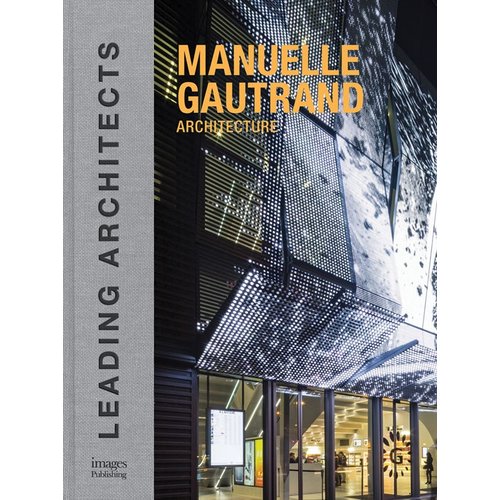It’s not my duty as an architect to look at it,” Zaha Hadid told The Guardian in late February. Her comment came after the news organization revealed that more than 500 Indian and 382 Nepalese workers had died in the last two years’ preparations for the 2022 FIFA World Cup in Qatar, an event for which she has designed a stadium. “I have nothing to do with the workers,” Hadid said.
Activists and the media pilloried Hadid for her aloof stance. But her comment underscores an issue that architecture firms with international practices often encounter but rarely discuss. In a global economy, as the process of making is increasingly alienated (and physically removed) from design, an architect’s duty to safeguard workers’ rights becomes perplexed. The AIA’s ethical standard on this—“Members should uphold human rights in their professional endeavors”—is not a mandatory dictum. But activists believe architects have more responsibility than professional codes dictate.
“The key thing is, under international standards, businesses have a responsibility to respect human rights, even if those abuses are not directly connected to their work,” says James Lynch, a researcher for Amnesty International who has investigated migrant conditions in Qatar. “If you have a business footprint and there are abuses that result from that, you have a responsibility to take steps to prevent those abuses or mitigate their effect.”
Unquestionably, labor abuses exist on every part of the globe. A report by the Worker’s Defense Project, a nonprofit that advocates for fair employment, found payment for more than one in five construction workers in Texas was routinely delayed. More seriously, in the Persian Gulf, glitzy megaprojects—prominent western cultural institutions designed by architects such as Frank Gehry, Jean Nouvel, and Hadid, among others—are built by the hands of migrant workers who are dying at a rate of more than one per day.
The migrant-laborer system in these countries, called the kafala system, affords few legal protections for workers by placing the employer in control of their visas. This arrangement prevents workers from switching jobs or leaving the country without the employer’s permission, essentially indenturing them. Late last year, Amnesty International released a report that painted a grim picture of life for World Cup construction workers in Qatar: the laborers toiled 12 hours or more a day in temperatures exceeding 110 degrees Fahrenheit and went home to squalid camps. Many were not paid for months—if at all. These conditions contribute to the high rate of death, often from heart attacks or workplace accidents. In 2009 and 2012, Human Rights Watch documented similar conditions on Saadiyat Island, a $26 billion luxury development off the coast of Abu Dhabi, where institutions including the Louvre and Guggenheim museums will have outposts. Human Rights Watch has since been banned entry into the country.
Amnesty International spent time in the camps for the employees of PSCI Specialties Qatar, a company subcontracted to work on a few projects in the area. This company, among others, was hired by two larger entities to build the Sidra Medical and Research Center in Doha, a state-of-the-art 1.5 million-square-foot facility designed by Pelli Clarke Pelli Architects. “They use Nepalese workers like donkeys,” a 27-year-old Nepalese employee said of the miserable living conditions while working for PSCI. The company’s employees were also routinely denied their own identification documents and, therefore, the ability to leave Qatar.
Many architects claim that distance from their projects prevents them from exerting influence. A spokesperson from Pelli Clarke Pelli said the firm was not aware of the Amnesty International findings: “As the design architect, our involvement with the project ended after it transitioned from design development to the design-build phase.”
Adrian Smith, a founding principal of the firm AS+GG, has designed the world’s tallest buildings, including the Burj Khalifa in Dubai when he was at SOM (2010), and the even taller Kingdom Tower in Saudi Arabia, to be finished in 2017. The majority of his firm’s projects are in construction markets that rely on a migrant-labor force. “If we dabble into issues of who is constructing the building and take that as a serious component to our business, we’d probably not have any work,” says Smith. “And neither would anyone else in the United States.”
Smith asserts that the labor force behind the firm’s building is strictly the contractor’s responsibility. “If something’s wrong with the building, you are responsible for that,” he says. “We’re responsible for what’s on the drawings.
“Is it a shame [the laborers] are not getting the income that Americans would get? As Americans, would we like to see that? We would sure like to see that.” He adds, “All we can do is use our expertise to help them to achieve a better world for themselves.”
Other firms view labor as a serious consideration in how they conduct business. Bill Sharples, principal at SHoP Architects, says labor practices factor into the choice of where the firm takes on projects. SHoP is currently building a 5,000-acre technology hub in Kenya and an innovation center in Botswana, projects in which the firm’s in-house construction division, SHoP Construction, relies on technology and 3-D modeling to coordinate with local workers for execution of the design. “Two of our guys will be working with the local laborers on the site,” he says. “When issues come up, you work them out. You don’t sit there and use the excuse that it’s a long-distance relationship. You really engage.”
“For someone to say ’that’s not my problem’ is nonsense,” says Sharples. “For us, making the building is as much a part of the process as designing it."
Change may soon be coming to the Gulf. In late April, the United Nations Human Rights Council called upon Qatar to abolish the kafala system. But change could also stem from a collective paradigm shift in the field of architecture, analogous to the way in which sustainability standards have been adopted. To accomplish this, there needs to be a clearly defined labor section in professional codes of ethics, an architectural-education system that teaches architects to value labor, and more engagement with construction sites. One New York–based group, Who Builds Your Architecture? is organizing a series of interdisciplinary workshops for architects, scholars, and activists to develop a guidebook that could start a field-wide conversation about these issues. Most critically, says cofounder Mabel O. Wilson, prominent architects need to take action. She reverts to Hadid’s Guardian quote: “Zaha does have some leverage, precisely because she is a highly visible person.”
For now, business-as-usual practices persist, but some advocates are already holding architects and institutions accountable. In late March, protestors from the satirically named Gulf Ultra Luxury Faction (G.U.L.F.) took to the atrium of the Solomon R. Guggenheim Museum in New York and dropped a ticker-tape parade’s worth of multicolored fake dollar bills in protest of the museum’s Frank Gehry–designed branch under construction on Saadiyat Island. On the verso of the bills is a sketch of Gehry’s design and the words Welcome to Global 1%.






Post a comment to this article
Report Abusive Comment